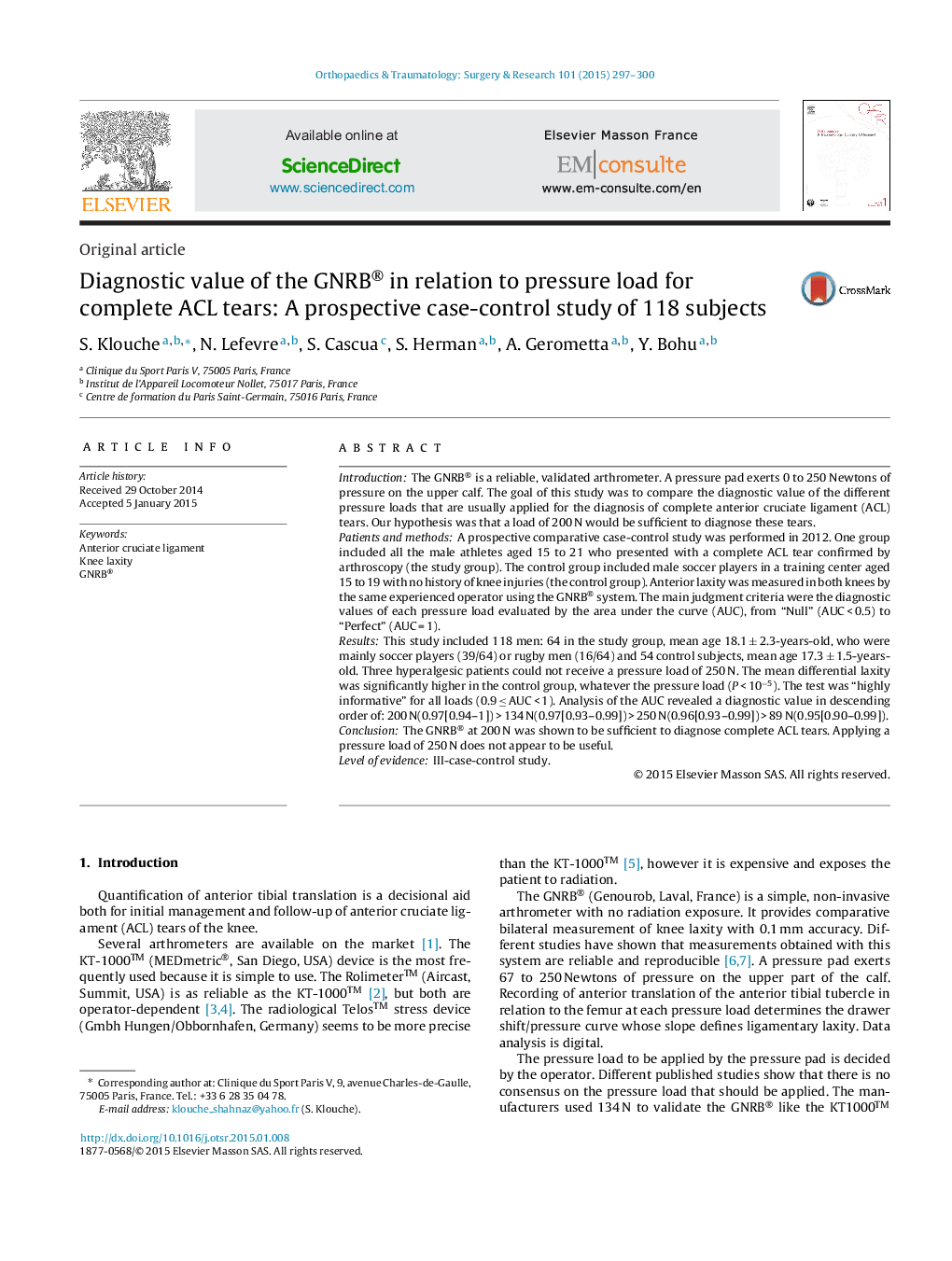| کد مقاله | کد نشریه | سال انتشار | مقاله انگلیسی | نسخه تمام متن |
|---|---|---|---|---|
| 4081171 | 1267582 | 2015 | 4 صفحه PDF | دانلود رایگان |

IntroductionThe GNRB® is a reliable, validated arthrometer. A pressure pad exerts 0 to 250 Newtons of pressure on the upper calf. The goal of this study was to compare the diagnostic value of the different pressure loads that are usually applied for the diagnosis of complete anterior cruciate ligament (ACL) tears. Our hypothesis was that a load of 200 N would be sufficient to diagnose these tears.Patients and methodsA prospective comparative case-control study was performed in 2012. One group included all the male athletes aged 15 to 21 who presented with a complete ACL tear confirmed by arthroscopy (the study group). The control group included male soccer players in a training center aged 15 to 19 with no history of knee injuries (the control group). Anterior laxity was measured in both knees by the same experienced operator using the GNRB® system. The main judgment criteria were the diagnostic values of each pressure load evaluated by the area under the curve (AUC), from “Null” (AUC < 0.5) to “Perfect” (AUC = 1).ResultsThis study included 118 men: 64 in the study group, mean age 18.1 ± 2.3-years-old, who were mainly soccer players (39/64) or rugby men (16/64) and 54 control subjects, mean age 17.3 ± 1.5-years-old. Three hyperalgesic patients could not receive a pressure load of 250 N. The mean differential laxity was significantly higher in the control group, whatever the pressure load (P < 10−5). The test was “highly informative” for all loads (0.9 ≤ AUC < 1). Analysis of the AUC revealed a diagnostic value in descending order of: 200 N(0.97[0.94–1]) > 134 N(0.97[0.93–0.99]) > 250 N(0.96[0.93–0.99]) > 89 N(0.95[0.90–0.99]).ConclusionThe GNRB® at 200 N was shown to be sufficient to diagnose complete ACL tears. Applying a pressure load of 250 N does not appear to be useful.Level of evidenceIII-case-control study.
Journal: Orthopaedics & Traumatology: Surgery & Research - Volume 101, Issue 3, May 2015, Pages 297–300